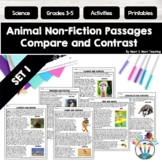130 results
12th grade general science lectures for Microsoft Word
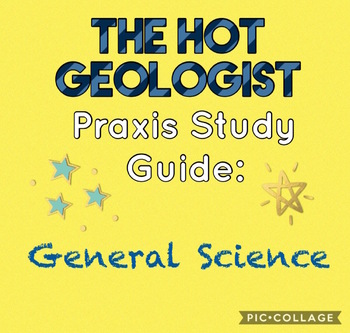
General Science Praxis Study Guide
Need to get that extra certification to help you in the job field? Say no more!
I completed a study guide that covers the Test Specifications for the General Science 7-12 (5435) from this PDF from the Praxis Website: https://www.ets.org/s/praxis/pdf/5435.pdf
-> I passed for my state standards from studying this study guide I made! Good luck, studying one page a day helps!
> I passed for my state standards from studying this study guide I made! Good luck, studying one page a day helps
Subjects:
Grades:
7th - 12th
Types:
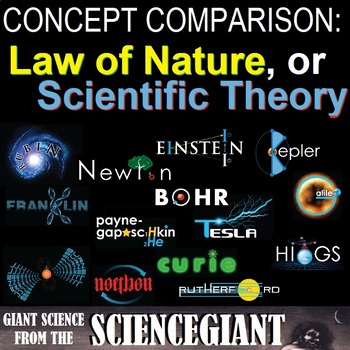
Question Exploration: Scientific Theory vs. Law
All scientific theories are based on natural laws. But not all natural laws have a scientific theory. This concept comparison helps Ss contrast How is a Scientific Theory Different from a Natural Law, and the question exploration helps Ss explain Why are some scientific theories modified? Question Exploration Routine is an instructional methods that teachers can use to help a diverse student population understand a body of content information by carefully answering a critical question to arrive
Subjects:
Grades:
7th - 12th, Higher Education
NGSS:
HS-ETS1-2
, MS-ETS1-1
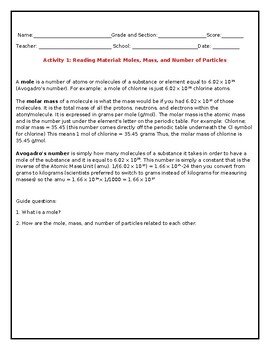
WORKSHEET: MOLES, MOLAR MASS, AND NUMBER OF PARTICLES
This worksheet is about moles, molar mass, and the number of particles. It contains three (3) activities; Describing moles, molar mass and the number of particles, converting Moles to Mass, Mass to Moles, Number of Particles to Mass and Mass to Number of Particles and Solving problems involving Moles, Molar Mass, and Number of Particles.
Subjects:
Grades:
7th - 12th, Higher Education
Types:
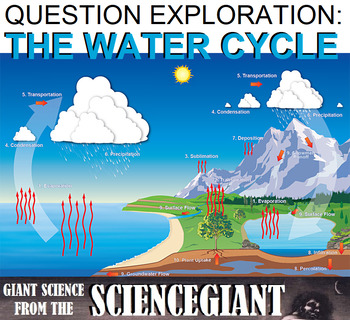
Question Exploration: What Processes Are Involved in the Water Cycle?
What Processes Are Involved in the Water Cycle? This Question Exploration helps Ss explain the water cycle -- the existence and movement of water on, in, and above the Earth. At its core, the hydrologic cycle is water (either as a liquid or solid), changing into water vapor (a gas) and back into a liquid or solid. This change of state of water as the water cycle is divided into three main parts:Moisture moving into the atmosphereMoisture moving through the atmosphereMoisture returning to the ea
Subjects:
Grades:
6th - 12th
NGSS:
HS-ESS2-5
Also included in: StayGiant Earth Science Bundle: The Atmosphere (air)

Introduction to Biology Guided Notes
These are editable Guided Notes for an Introduction to Biology unit. I typically use this for my first unit in my General Biology class. It is broken up into 3 sections:1.1 - Characteristics of Life1.2 - The Scientific Process1.3 - Scientific ExperimentsThese notes accompany my free Introduction to Biology PowerPoint. Introduction to Biology PowerPoint
Subjects:
Grades:
9th - 12th

Forensic Science Lab Bundle
Get all of my Forensic Science labs in one place! Discounted 20% from buying individually! Includes:Lip Print Analysis Fiber AnalysisSoil ExaminationShoe ImpressionsBlood Splatter AnalysisOdontology (teeth)Tire ImpressionsLatent Fingerprints (also available to try free-here)Includes a bonus file with a link to my Soil Examination Google Slides presentation!
Subjects:
Grades:
9th - 12th
Types:
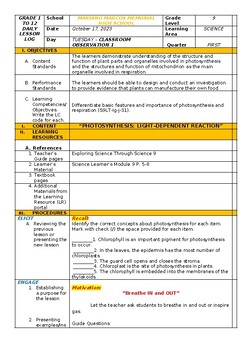
"LESSON PLAN: PHOTOSYNTHESIS_LIGHT DEPENDENT REACTION"
This lesson plan is designed for school-based classroom observation. It uses 7 ES as its parts.
Subjects:
Grades:
7th - 12th
Types:
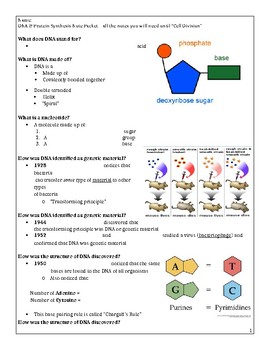
DNA and Protein Synthesis Guided Notes
This purchase is a 9-page set of guided notes to accompany the 68 slide power point presentation I also have on my store page. The power point outlines DNA structure, the history of how DNA was discovered, properties of DNA, as well as DNA replication, transcription, translation, and mutations.
Both the notes and the power point are EDITABLE so that you as the teacher can add and remove what is necessary for your students! Enjoy :)
Subjects:
Grades:
9th - 12th
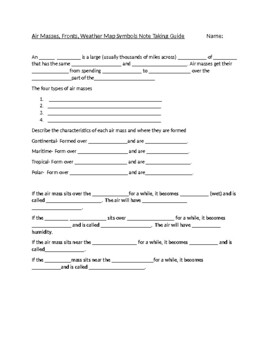
Air Masses, Fronts, and Weather Map Symbols Student Note Taking Guide
This Note-Taking Guide goes along with my Air Masses, Fronts, and Weather Map Symbols PowerPoint that has over 50 slides. If weather and climate/ meteorology is not something you know how to teach, this will cover everything they could possibly need to know. My undergraduate degree was in Geography and Weather and Climate was my area of expertise, so I really always put a lot of effort into this unit. I hope you will find it helps with your class.
Subjects:
Grades:
3rd - 12th
CCSS:
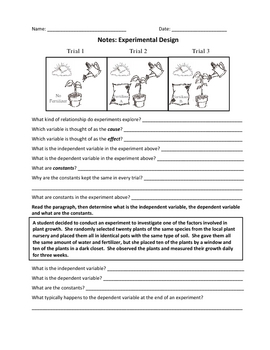
Experimental Design PowerPoint Lesson Student Notes Page
These notes coincide with the Experimental Design PowerPoint. It was designed to help my students with their mastery of the experimental design questions found in Objective 1: Nature of Science on the TAKS test in Texas. It helps students understand how to identify the independent and dependent variables, constants, hypothesis, control group and the conclusion. It also emphasizes that factors that can keep a hypothesis or conclusion from being valid (emotions, opinions, random sampling, and l
Subjects:
Grades:
5th - 12th

Marine Science Plankton Video Notes w/Link
Use a "flipped classroom" approach with these online notes. Within the assignment are questions that go along with a 13 minute "video" of plankton notes. These are usually assigned as homework for my students and that allows us to have more time in class to do hands on activities! I have lots of other Marine Science based Video Notes assignments listed, feel free to keep on shopping!
Subjects:
Grades:
9th - 12th
Also included in: Marine Plankton/ Harmful Algal Bloom Bundle w/ Notes & Research Project

Question Exploration and Concept Compare Frame: Earth Layers
What are the main parts of the Earth? This question exploration explains about why are there different layers to the structure of the Earth, due to composition, density, temperature, and pressure. A concept comparison of Earth's interior -- the crust, the mantle, the outer core, and the inner core -- is provided. And an assessment activity with a worksheet for Ss to label and color the external and internal layers of Earth based upon the information and diagrams is included.Question Exploration
Subjects:
Grades:
6th - 12th
NGSS:
MS-ESS2-3
, HS-ESS2-3
, HS-ESS2-1
, MS-ESS2-2
, HS-ESS2-6
...
Also included in: StayGiant Earth Science Bundle: Geology (plate tectonics)
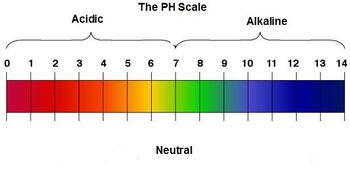
PH Note Guide (AP Biology/Honors Level)
This is a simple note guide that will introduce students to pH. Students will learn the definition of acidic, basic, and neutral solutions. They will also fill in pH levels on the pH scale and will learn the meaning of the numbers on the pH scale (i.e. pH of 2 means that 10-2 moles of H+ ions/liter and 10-12 moles of OH- ions/liter are present in a solution). The notes are written to be visual, inquiry-based and interactive to maximize student learning.Students will definitely need to have an un
Subjects:
Grades:
9th - 12th, Higher Education, Adult Education
Also included in: Scientific Method, Properties of Water, & pH Bundle

Newton's Laws of Motion, Force, and Momentum fill in the blank notes
fill in the blank notes with my powerpoint
Subjects:
Grades:
6th - 12th
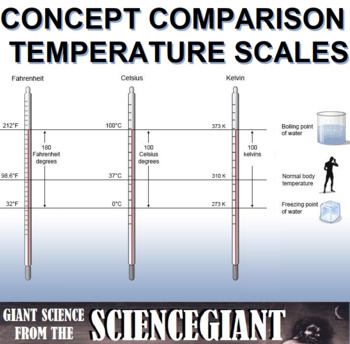
Concept Compare Frame: Temperature Scales (Fahrenheit, Celsius, Kelvin)
How do you finish the sentence: "It's so hot that..."? Good punchlines aside ("It's so hot... the fire ants are really on fire") Dan Fahrenheit, Andy Celsius, and Lord Kelvin had three ways to answer that question. This Concept Comparison contrasts their three temperature scales and looks for similarities. The Frame Routine is a strategy designed to assist students as they organize topics, main ideas and details. This technique includes a basic hierarchic graphic organizer called a "Frame" that
Subjects:
Grades:
7th - 12th, Higher Education

Guided Notes- Space Volcanoes
Guided notes to Space Volcanoes: Volcanic Activity in our Solar System Slides.
Subjects:
Grades:
9th - 12th
Also included in: Space Volcanoes: Volcanic Activity in our Solar System
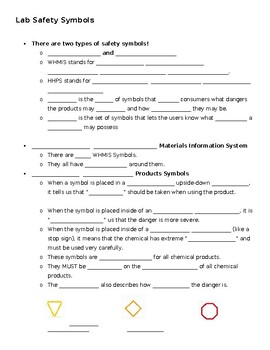
Lab Safety Symbols Fill-In-The-Blank Notes
Fill-in-the-blank notes to go with my Lab Safety Symbols PPT.
Subjects:
Grades:
9th - 12th
Also included in: Lab Safety Symbols Lesson Bundle
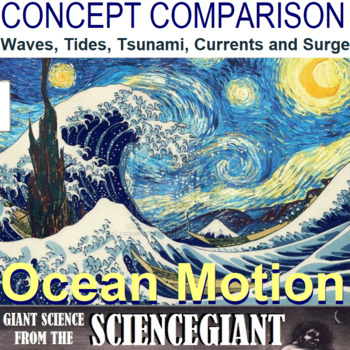
Concept Comparison: Ocean Motion - Waves, Tides, Tsunami, Currents and Surge
This Ocean Motion Concept Comparison contrasts changes of velocity in fluid motion within large bodies of water among waves, tides, tsunami, currents, and storm surge (sea, lake, and overland surges from hurricanes, or SLOSH).Concept Comparison Routine is used help compare and contrast key concepts. Specifically, students use like and unlike characteristics and categories shared and not shared by two or more concepts to better understand the overall concept. Students taught using the Content Enh
Subjects:
Grades:
6th - 12th
NGSS:
MS-PS4-1
, MS-PS4-2
, HS-PS4-1
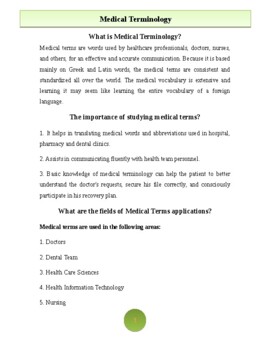
Medical Terminology for Beginners- 2 Activities- (Distance Learning Option)
Let's be very clear about this, if you want to feel proud of yourself and do a great job in the health care field, you need to learn and understand medical terminology! It is a fundamental part of the future of your career.Our prefixes and suffixes medical terminology book is a must-have study guide and workbook for students looking to broaden or refreshes their skills of understanding medical terms. It is perfect for anyone who wishes to enter the medical field, and is a great complementary too
Subjects:
Grades:
6th - 12th, Higher Education, Adult Education, Staff
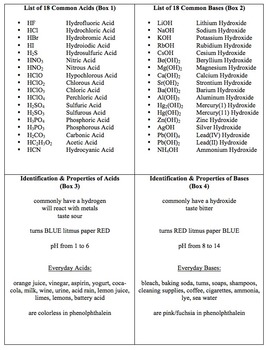
Acids and Bases Graphic Organizer
This organizer covers the following eight topics - a list of 18 common acids, a list of 18 common bases, identification & properties of acids, identification & properties of bases, neutralization reactions, neutralization reaction examples, a review of solubility rules, and a review of naming common ions.
This document is a template for the teacher who can then instruct his or her students on how to mimic the organizer on their own sheet of paper. Once completed, the organizer makes a g
Subjects:
Grades:
9th - 12th
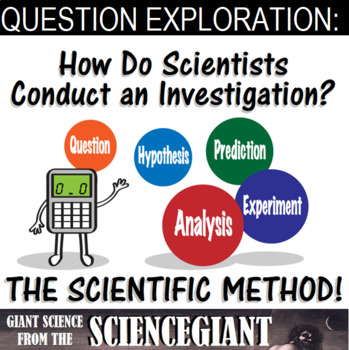
Question Exploration: How Do We Use the Scientific Method to Investigate?
How do you design an experiment? This question exploration helps Ss explain How do scientists use the scientific method to conduct an investigation?Question Exploration Routine is an instructional methods that teachers can use to help a diverse student population understand a body of content information by carefully answering a critical question to arrive at a main idea answer. Students taught using the question exploration routine earned higher total test scores than did students taught using t
Subjects:
Grades:
7th - 12th
NGSS:
HS-ETS1-2
, MS-ETS1-4
, MS-ETS1-1
, 3-5-ETS1-2
, MS-ETS1-3
Also included in: StayGiant Second Day of School Success
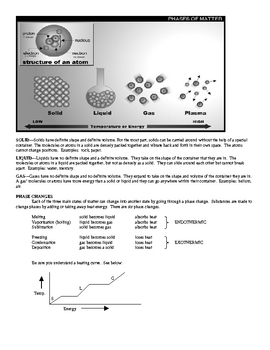
Physical Science EOCT review handout
This is an condensed review guide for the GA EOCT physical science test. It includes graphs, pictures, diagrams, and notes that are easy to follow and understand.
Subjects:
Grades:
9th - 12th

SNC2D Nervous and Musculoskeletal System Note
SCN2D Grade 10 Academic Science (Aligns with Nelson Science Perspectives 10). This lesson goes above and beyond the curriculum. The purpose is to introduce more complicated concepts to better prepare the students for biologyCorresponds with the following PowerPointCoversNervous System DivisionsStructure of neuronStimulus responseParts of the brainaction potentials and synaptic transmissionSynovial jointsstructure of musclemuscle contraction
Subjects:
Grades:
10th - 12th, Higher Education, Adult Education, Staff
Also included in: SNC2D Biology Unit

Question Exploration: How Do Scientists Explore the Natural World?
This is How I Science! This question exploration asks: How do scientists explore the natural world? Here's a hint: it involves observing, classifying, making models, inferring, predicting, and analyzing! Question Exploration Routine is an instructional methods that teachers can use to help a diverse student population understand a body of content information by carefully answering a critical question to arrive at a main idea answer. Students taught using the question exploration routine earned h
Subjects:
Grades:
7th - 12th
Also included in: StayGiant Second Day of School Success
Showing 1-24 of 130 results




